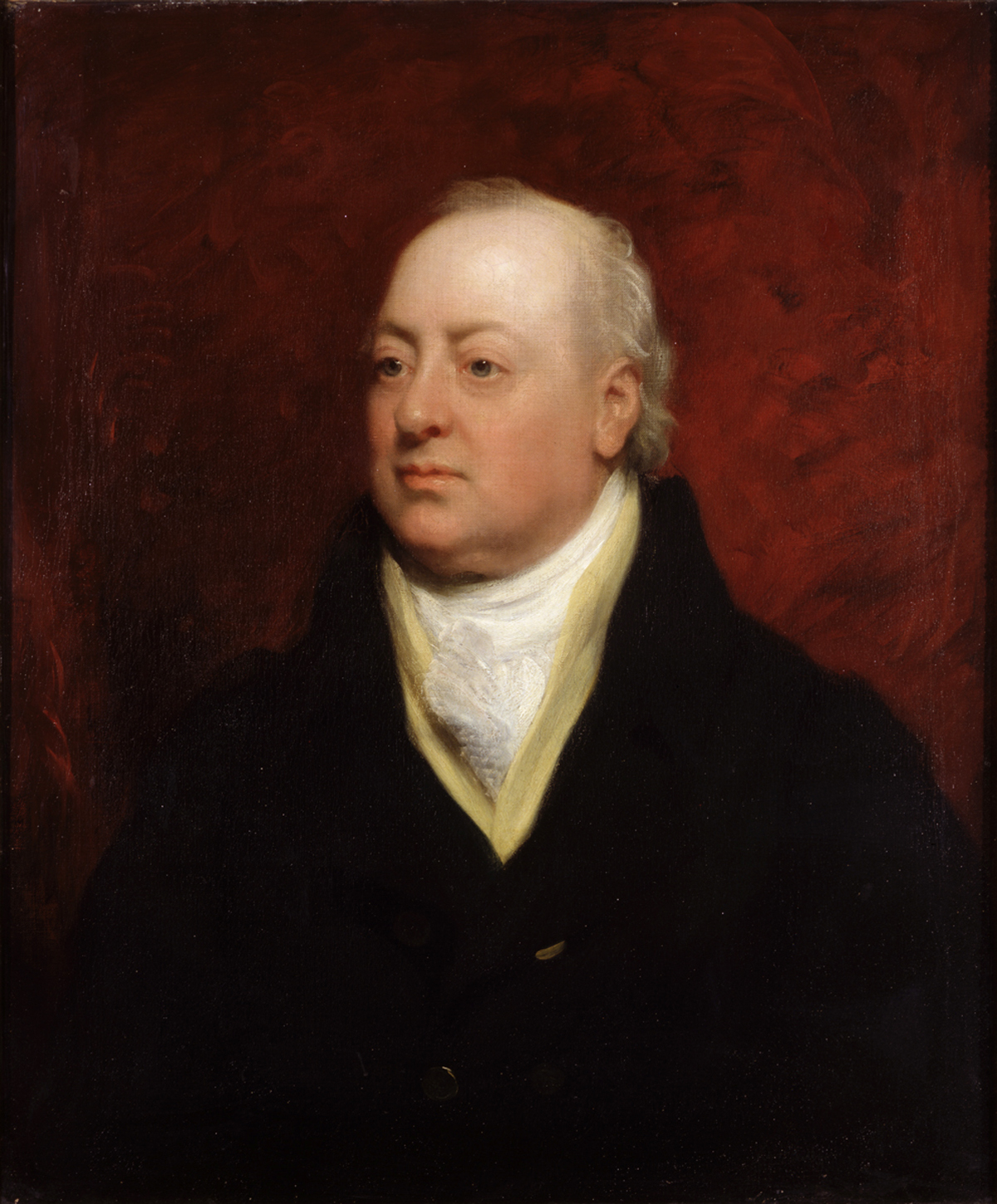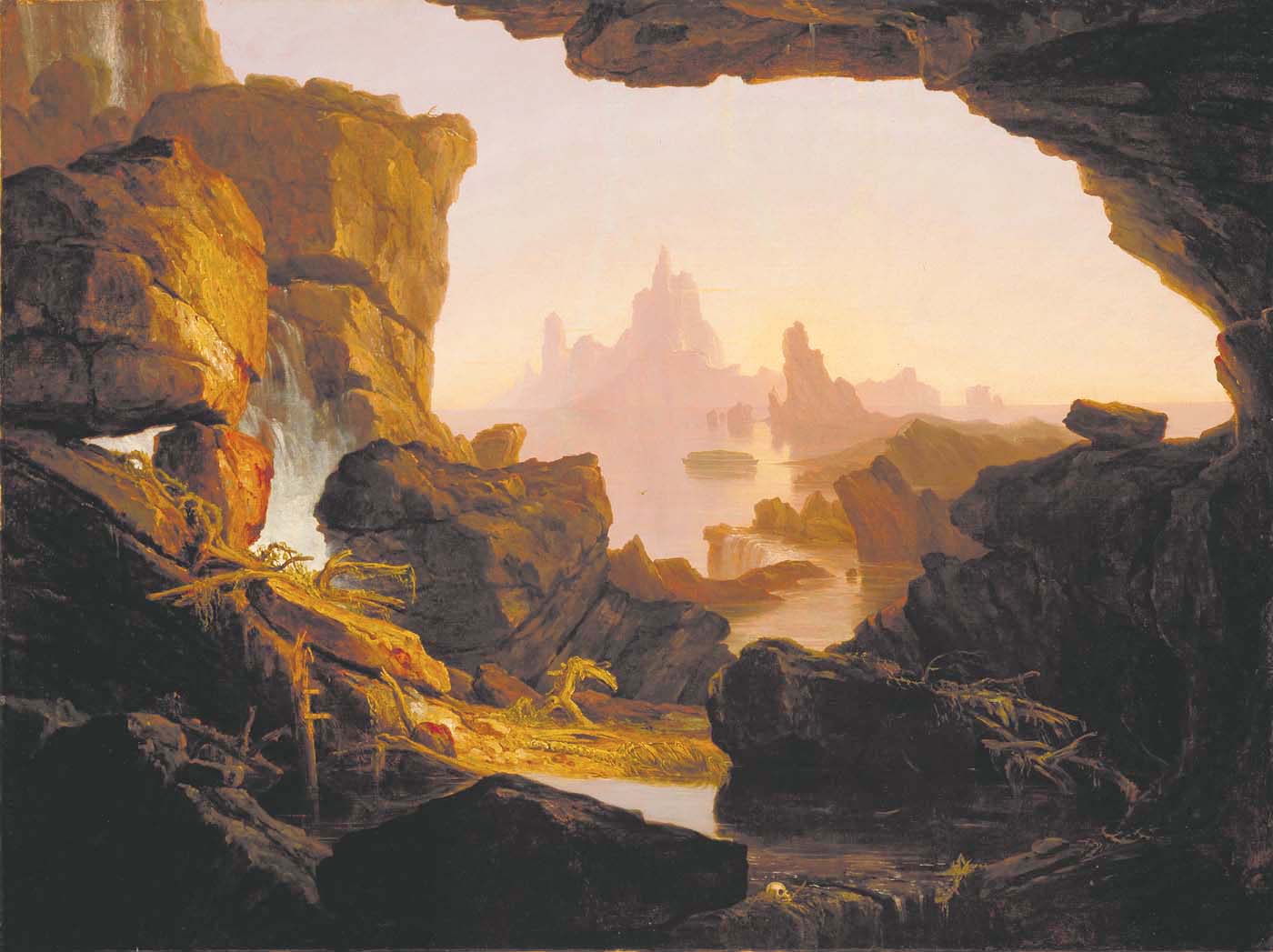|
Dream Cave
Dream Cave (sometimes called Dream Hole or Dream Mine) is a natural limestone cavern located near Wirksworth in Derbyshire, England. It was discovered by lead miners in 1822 and was found to contain the almost complete skeletal remains of a woolly rhinoceros and other large mammal bones. These remains were acquired by the geologist William Buckland and are now housed in Oxford Museum. Location and description Dream Cave formed as a natural karstic cavity along a vein of mineralisation within a series of Lower Carboniferous limestone rocks called the Monsal Dale Formation. The entrance to Dream Cave (known to cavers as Dream Hole) is on a grass-covered mound, on a hillside to the west of the town of Wirksworth, east of Carsington Reservoir, and overlooking woodland. This entrance is a deep and steep-sided natural fissure within the limestone, and is in fields pockmarked by former lead-mining activity. Dream Cave lies at an altitude of approximately and is about d ... [...More Info...] [...Related Items...] OR: [Wikipedia] [Google] [Baidu] |
Derbyshire
Derbyshire ( ) is a ceremonial county in the East Midlands, England. It includes much of the Peak District National Park, the southern end of the Pennine range of hills and part of the National Forest. It borders Greater Manchester to the north-west, West Yorkshire to the north, South Yorkshire to the north-east, Nottinghamshire to the east, Leicestershire to the south-east, Staffordshire to the west and south-west and Cheshire to the west. Kinder Scout, at , is the highest point and Trent Meadows, where the River Trent leaves Derbyshire, the lowest at . The north–south River Derwent is the longest river at . In 2003, the Ordnance Survey named Church Flatts Farm at Coton in the Elms, near Swadlincote, as Britain's furthest point from the sea. Derby is a unitary authority area, but remains part of the ceremonial county. The county was a lot larger than its present coverage, it once extended to the boundaries of the City of Sheffield district in South Yorkshire where it cov ... [...More Info...] [...Related Items...] OR: [Wikipedia] [Google] [Baidu] |
Christ Church, Oxford
Christ Church ( la, Ædes Christi, the temple or house, '' ædēs'', of Christ, and thus sometimes known as "The House") is a constituent college of the University of Oxford in England. Founded in 1546 by King Henry VIII, the college is uniquely a joint foundation of the university and the cathedral of the Oxford diocese, Christ Church Cathedral, which both serves as the college chapel and whose dean is ''ex officio'' the college head. The college is amongst the largest and wealthiest of colleges at the University of Oxford, with an endowment of £596m and student body of 650 in 2020. As of 2022, the college had 661 students. Its grounds contain a number of architecturally significant buildings including Tom Tower (designed by Sir Christopher Wren), Tom Quad (the largest quadrangle in Oxford), and the Great Dining Hall, which was the seat of the parliament assembled by King Charles I during the English Civil War. The buildings have inspired replicas throughout the world in a ... [...More Info...] [...Related Items...] OR: [Wikipedia] [Google] [Baidu] |
Site Of Special Scientific Interest
A Site of Special Scientific Interest (SSSI) in Great Britain or an Area of Special Scientific Interest (ASSI) in the Isle of Man and Northern Ireland is a conservation designation denoting a protected area in the United Kingdom and Isle of Man. SSSI/ASSIs are the basic building block of site-based nature conservation legislation and most other legal nature/geological conservation designations in the United Kingdom are based upon them, including national nature reserves, Ramsar sites, Special Protection Areas, and Special Areas of Conservation. The acronym "SSSI" is often pronounced "triple-S I". Selection and conservation Sites notified for their biological interest are known as Biological SSSIs (or ASSIs), and those notified for geological or physiographic interest are Geological SSSIs (or ASSIs). Sites may be divided into management units, with some areas including units that are noted for both biological and geological interest. Biological Biological SSSI/ASSIs may ... [...More Info...] [...Related Items...] OR: [Wikipedia] [Google] [Baidu] |
Everard Home
Sir Everard Home, 1st Baronet, FRS (6 May 1756, in Kingston upon Hull – 31 August 1832, in London) was a British surgeon. Home was born in Kingston-upon-Hull and educated at Westminster School. He gained a scholarship to Trinity College, Cambridge, but decided instead to become a pupil of his brother-in-law, John Hunter, at St George's Hospital. Hunter had married his sister, the poet and socialite Anne Home, in July 1771. He assisted Hunter in many of his anatomical investigations, and in the autumn of 1776 he partly described Hunter's collection. There is also considerable evidence that Home plagiarized Hunter's work, sometimes directly, sometimes indirectly; he also systematically destroyed his brother-in-law's papers in order to hide evidence of this plagiarism. It seems likely that the fire (in Home's apartments at Chelsea Hospital) which destroyed the Hunterian manuscripts in Home's possession also destroyed a precious collection of 26 microscopes originally made by ... [...More Info...] [...Related Items...] OR: [Wikipedia] [Google] [Baidu] |
Diluvial Geology
Flood geology (also creation geology or diluvial geology) is a pseudoscientific attempt to interpret and reconcile geological features of the Earth in accordance with a literal belief in the global flood described in Genesis 6–8. In the early 19th century, diluvial geologists hypothesized that specific surface features provided evidence of a worldwide flood which had followed earlier geological eras; after further investigation they agreed that these features resulted from local floods or from glaciers. In the 20th century, young-Earth creationists revived flood geology as an overarching concept in their opposition to evolution, assuming a recent six-day Creation and cataclysmic geological changes during the biblical flood, and incorporating creationist explanations of the sequences of rock strata. In the early stages of development of the science of geology, fossils were interpreted as evidence of past flooding. The "theories of the Earth" of the 17th century proposed ... [...More Info...] [...Related Items...] OR: [Wikipedia] [Google] [Baidu] |
Cal BP
Before Present (BP) years, or "years before present", is a time scale used mainly in archaeology, geology and other scientific disciplines to specify when events occurred relative to the origin of practical radiocarbon dating in the 1950s. Because the "present" time changes, standard practice is to use 1 January 1950 as the commencement date (epoch) of the age scale. The abbreviation "BP" has been interpreted retrospectively as "Before Physics", which refers to the time before nuclear weapons testing artificially altered the proportion of the carbon isotopes in the atmosphere, which scientists must now account for. In a convention that is not always observed, many sources restrict the use of BP dates to those produced with radiocarbon dating; the alternative notation RCYBP stands for the explicit "radio carbon years before present". Usage The BP scale is sometimes used for dates established by means other than radiocarbon dating, such as stratigraphy. This usage differs from ... [...More Info...] [...Related Items...] OR: [Wikipedia] [Google] [Baidu] |
Bison Priscus
The steppe bisonSeveral literatures address the species as ''primeval bison''. or steppe wisent (''Bison'' ''priscus'') – Yukon Beringia Interpretive Centre. Beringia.com. Retrieved on 2013-05-31. is an extinct species of bison that was once found on the where its range included , , [...More Info...] [...Related Items...] OR: [Wikipedia] [Google] [Baidu] |
Aurochs
The aurochs (''Bos primigenius'') ( or ) is an extinct cattle species, considered to be the wild ancestor of modern domestic cattle. With a shoulder height of up to in bulls and in cows, it was one of the largest herbivores in the Holocene; it had massive elongated and broad horns that reached in length. The aurochs was part of the Pleistocene megafauna. It probably evolved in Asia and migrated west and north during warm interglacial periods. The oldest known aurochs fossils found in India and North Africa date to the Middle Pleistocene and in Europe to the Holstein interglacial. As indicated by fossil remains in Northern Europe, it reached Denmark and southern Sweden during the Holocene. The aurochs declined during the late Holocene due to habitat loss and hunting, and became extinct when the last individual died in 1627 in Jaktorów forest in Poland. The aurochs is depicted in Paleolithic cave paintings, Neolithic petroglyphs, Ancient Egyptian reliefs and Bronze ... [...More Info...] [...Related Items...] OR: [Wikipedia] [Google] [Baidu] |
Glacial Period
A glacial period (alternatively glacial or glaciation) is an interval of time (thousands of years) within an ice age that is marked by colder temperatures and glacier advances. Interglacials, on the other hand, are periods of warmer climate between glacial periods. The Last Glacial Period ended about 15,000 years ago. The Holocene is the current interglacial. A time with no glaciers on Earth is considered a greenhouse climate state. Quaternary Period Within the Quaternary, which started about 2.6 million years before present, there have been a number of glacials and interglacials. At least eight glacial cycles have occurred in the last 740,000 years alone. Penultimate Glacial Period The Penultimate Glacial Period (PGP) is the glacial period that occurred before the Last Glacial Period. It began about 194,000 years ago and ended 135,000 years ago, with the beginning of the Eemian interglacial. Last Glacial Period The last glacial period was the most recent glacial period ... [...More Info...] [...Related Items...] OR: [Wikipedia] [Google] [Baidu] |
Marine Isotope Stage
Marine isotope stages (MIS), marine oxygen-isotope stages, or oxygen isotope stages (OIS), are alternating warm and cool periods in the Earth's paleoclimate, deduced from oxygen isotope data reflecting changes in temperature derived from data from deep sea core samples. Working backwards from the present, which is MIS 1 in the scale, stages with even numbers have high levels of oxygen-18 and represent cold glacial periods, while the odd-numbered stages are lows in the oxygen-18 figures, representing warm interglacial intervals. The data are derived from pollen and foraminifera (plankton) remains in drilled marine sediment cores, sapropels, and other data that reflect historic climate; these are called proxies. The MIS timescale was developed from the pioneering work of Cesare Emiliani in the 1950s, and is now widely used in archaeology and other fields to express dating in the Quaternary period (the last 2.6 million years), as well as providing the fullest and best data ... [...More Info...] [...Related Items...] OR: [Wikipedia] [Google] [Baidu] |
Before Present
Before Present (BP) years, or "years before present", is a time scale used mainly in archaeology, geology and other scientific disciplines to specify when events occurred relative to the origin of practical radiocarbon dating in the 1950s. Because the "present" time changes, standard practice is to use 1 January 1950 as the commencement date (epoch) of the age scale. The abbreviation "BP" has been interpreted retrospectively as "Before Physics", which refers to the time before nuclear weapons testing artificially altered the proportion of the carbon isotopes in the atmosphere, which scientists must now account for. In a convention that is not always observed, many sources restrict the use of BP dates to those produced with radiocarbon dating; the alternative notation RCYBP stands for the explicit "radio carbon years before present". Usage The BP scale is sometimes used for dates established by means other than radiocarbon dating, such as stratigraphy. This usage differs from t ... [...More Info...] [...Related Items...] OR: [Wikipedia] [Google] [Baidu] |






